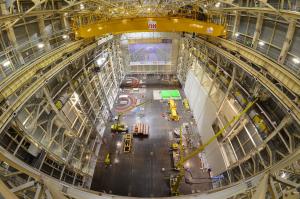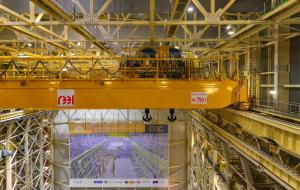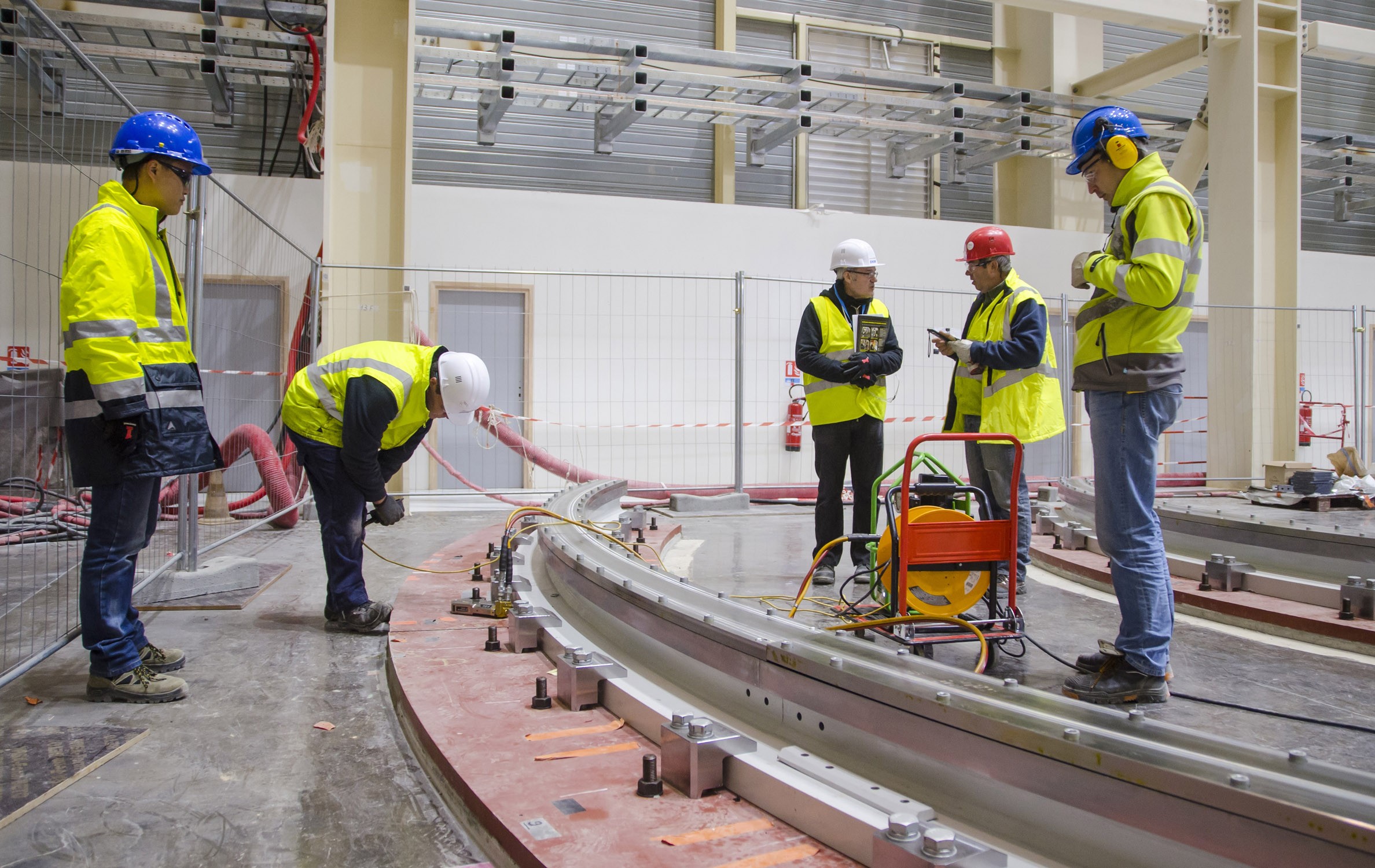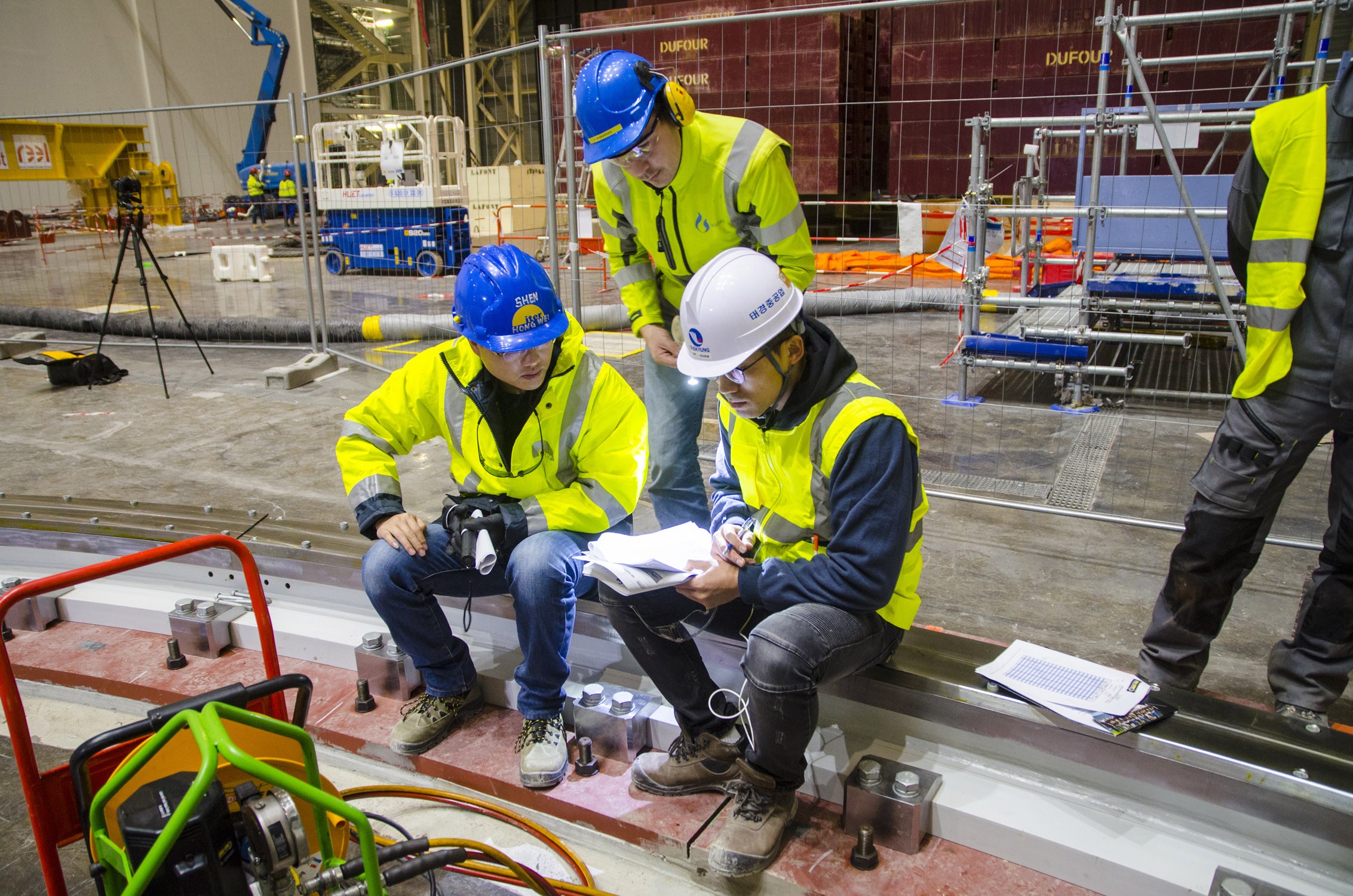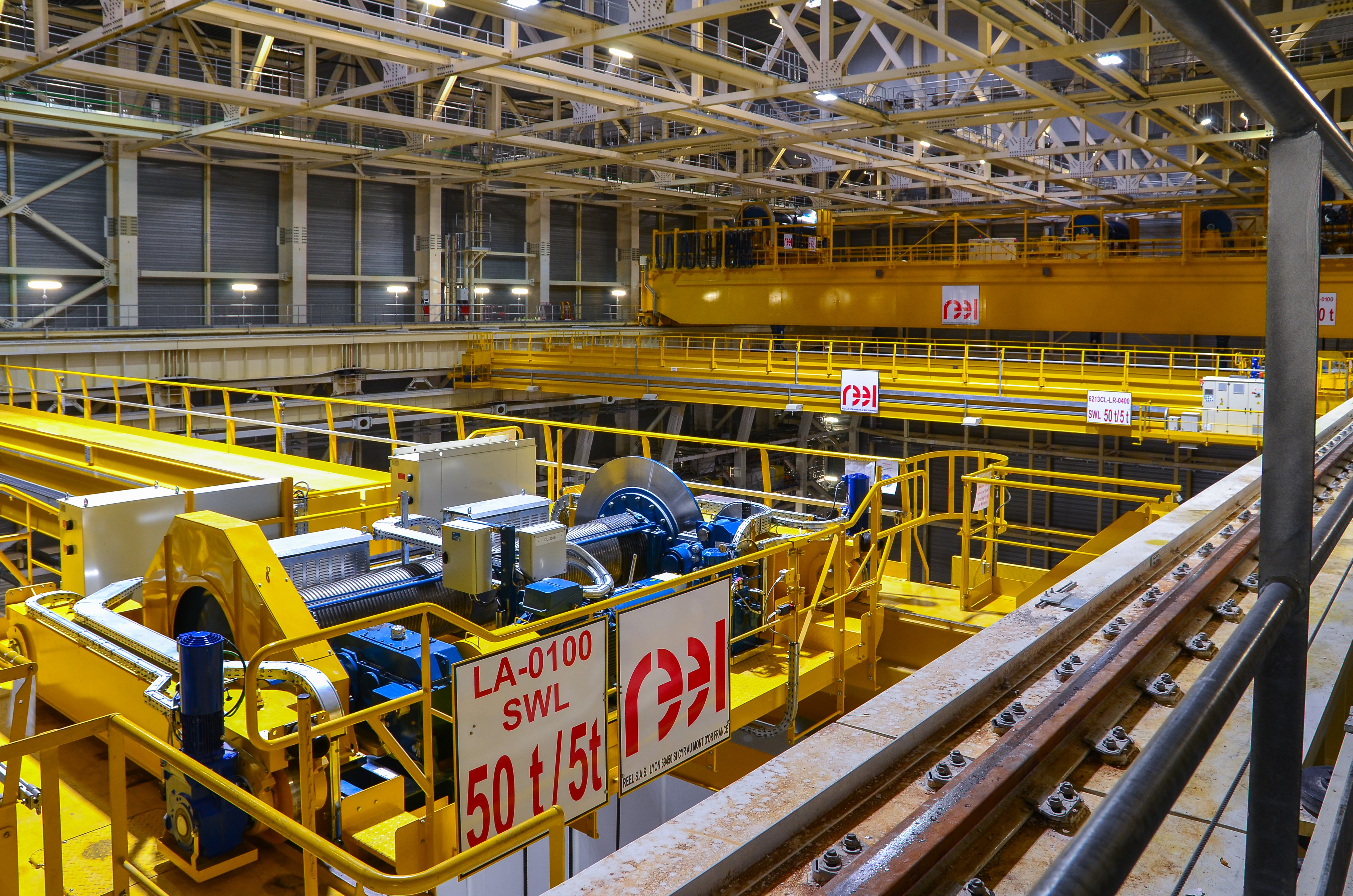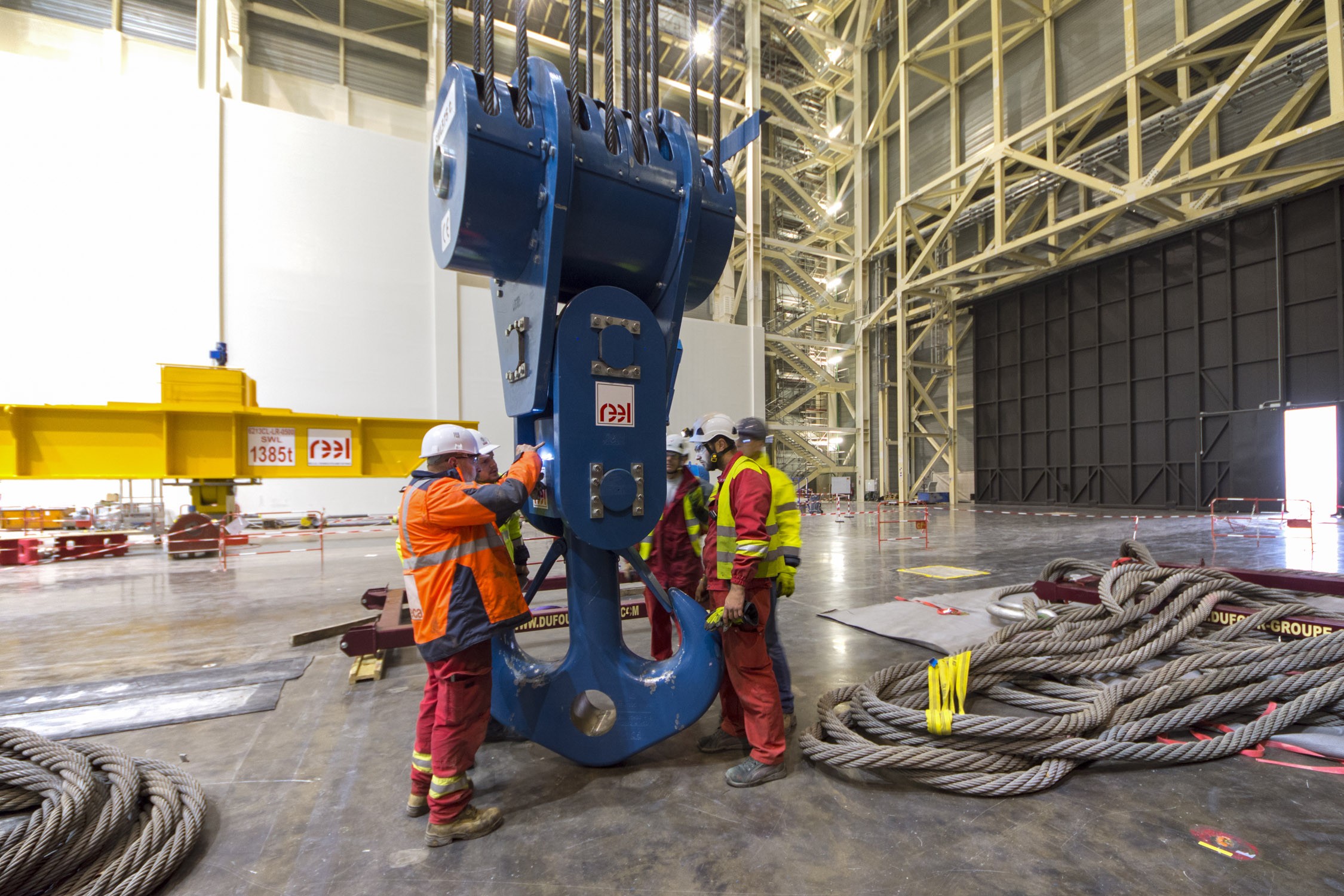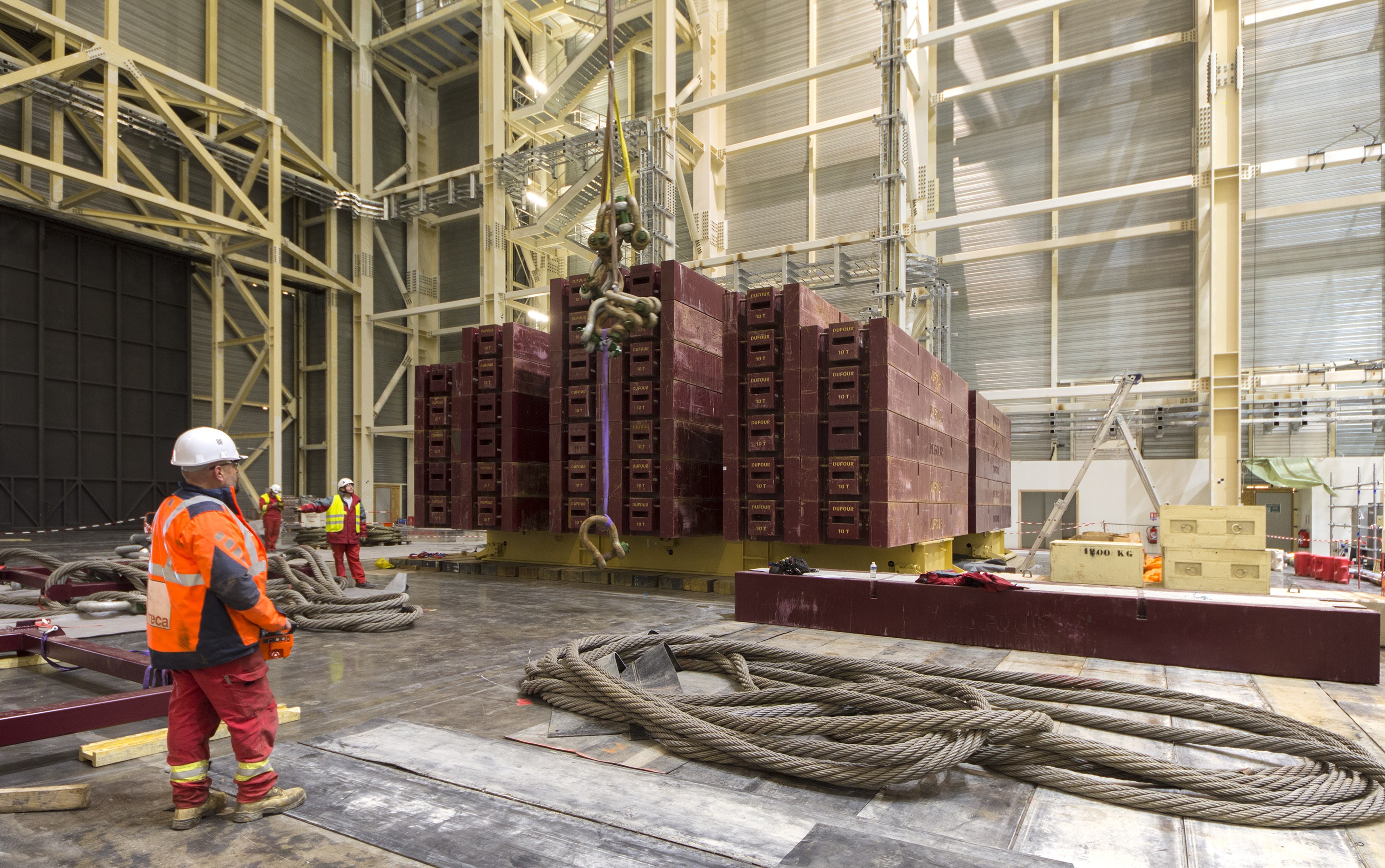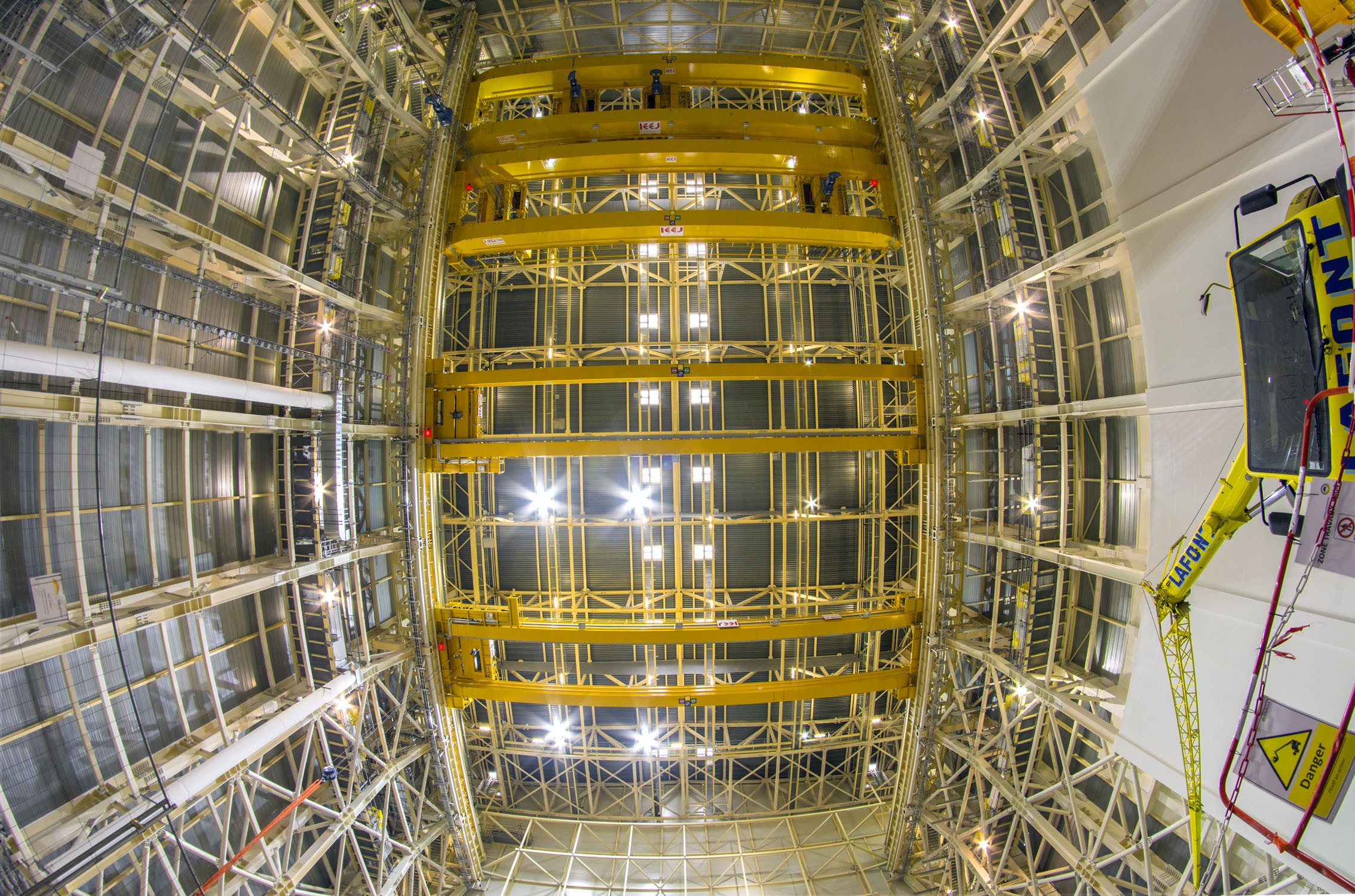The rafters of the Assembly Hall are the catwalk of this oversized theatre. They offer a breathtaking view of the ongoing work on the stage floor some 45 metres below.
To the right side of the 6,000-square-metre open space, technicians are busy preparing for the Titans' arrival, bolting semi-circular rail tracks to steel plates anchored deep into the floor, adjusting torque, and verifying alignment with laser optics.
The
Twin Titans, SSAT-1 and SSAT-2 (for vacuum vessel Sector Sub-Assembly Tool), will travel along these tracks, opening and closing their arms to bring together and pre-assemble a vacuum vessel sector with a pair of toroidal field coils plus thermal shielding—for a total mass of 1,200 tonnes. The operation will be repeated nine times, once for each of the nine vacuum vessel sectors.
The Titans will operate in close cooperation with another giant tool—the double overhead crane that will deliver the sub-components to be assembled and, when completed, will carry each sub-assembly to the Tokamak well.

